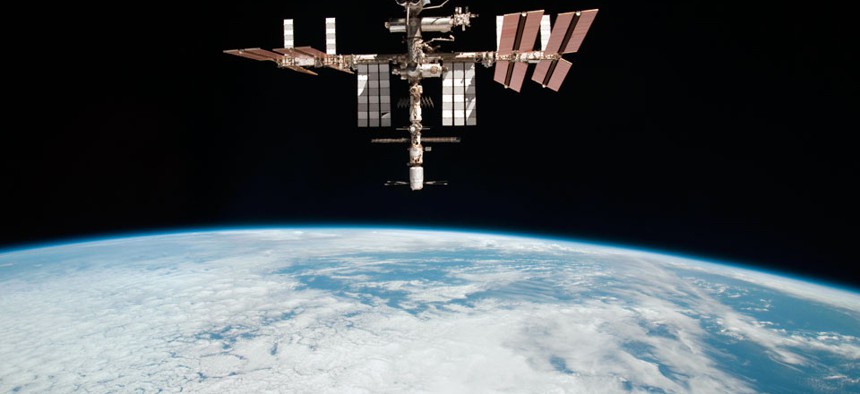Soon, the Coldest Place in the Known Universe Will Be on ... the International Space Station

The International Space Station flying at an altitude of approximately 220 miles NASA/AP
'We're going to explore temperatures far below anything found naturally.'
Space, on top of everything else, is cold. Really cold. The cosmic background temperature—the temperature of the cosmic background radiation thought to be left over from the Big Bang—is 3 Kelvin, or -455 degrees Fahrenheit. Yet there's variation within that. Solar winds can reach millions of degrees Fahrenheit. And then there's the Boomerang Nebula, the cloud of gas puffed out by a dying star in the constellation Centaurus. The Boomerang Nebulaclocks in at a slightly-more-frigid-than-average -458 degrees Fahrenheit, making it, officially, the coldest spot in the known universe.
But that's about to change. Soon, it seems, the coldest spot in the known universe will be ... the International Space Station.
Yep. Meet the Cold Atom Lab, the "atomic refrigerator" NASA has planned for launch in 2016—a device that will, it's hoped, allow the agency to study quantum mechanics in a controlled environment. "We're going to explore temperatures far below anything found naturally," JPL's Rob Thompson told ScienceatNASA.
So how cold is unnaturally cold? NASA's orbiting refrigerator—the device that will, better than any other, put the "fridge" in "frigid"—will reach, if all goes according to plan, temperatures as low as 100 pico-Kelvin above absolute zero (with “pico” denoting one-trillionth).
And the fridge will use the ISS's own infrastructure to generate all the coldness. The station's existing cooling system relies on the fact that gas, as it expands, cools. The Cold Atom Lab will use magnetic traps to expand gas until it gets down to the temperature the researchers seek. The traps aren't expected to require much energy for their working, since, in space, the gas won't need to be supported against gravity.
But why go to all this trouble? Why bother to create a cold so cool it does not, to our knowledge, exist in nature? Because of these things known as Bose-Einstein Condensates, dilute gases that demonstrate unusual macro-quantum effects at temperatures near absolute zero. When two Bose-Einstein Condensates are placed together under particularly frigid conditions, they don’t mix; instead, they interfere with each other like waves. It's behavior that's mysterious to scientists—which means it's behavior that's also exciting to scientists. The ISS's "atomic refrigerator" will allow researchers to study those crazy gases ... at the coldest temperatures possible.
NEXT STORY: Confused by Obamacare? Ask the President


